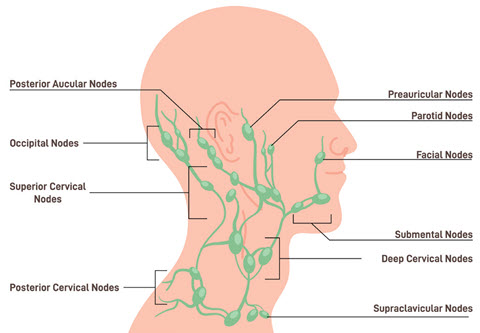Dive Into the Details of Neck Dissection Coding
And peruse this quick refresher on what each procedure involves. If your otolaryngologist documents that they performed a neck dissection, do you understand what happened and why? If not, keep reading for a rundown on the different types of dissections and what each involves, as well as how to report these procedures. Foundation: Seeing notes about a neck dissection means that your surgeon removed lymph nodes in the neck — also known as cervical lymphadenectomy — that contain cancerous cells, and possibly some surrounding tissues or structures. The surgery is almost always done for individuals with certain types of head and neck cancer. The type of neck dissection and extent of removal will help guide your choice of CPT® code(s). Let’s take a closer look. Understand Neck Dissections and What Each Code Includes Neck dissections are classified by the zones from which the lymph nodes are removed, and whether or not certain other important structures in the neck are preserved. “This is the most common neck dissection performed today, now that sparing techniques have been perfected and taught,” says Barbara J. Cobuzzi, MBA, CPC, CENTC, CPC-H, CPC-P, CPC-I, CHCC, president of CRN Healthcare Solutions, a consulting firm in Tinton Falls, New Jersey. It’d be appropriate to use 38700 (Suprahyoid lymphadenectomy) to code a very limited SHND involving level I only, but you would report all other SNDs (multiple-level) with 38724. “This means that you can use MRND code 38724 for dissections that do not involve all levels 1-V, but rather a subset of the levels based on the extent of disease found, along with the preservation of one of the non-lymphatic structures,” Cobuzzi clarifies. Check for Unilateral vs. Bilateral Service Neck dissections are unilateral procedures. Midline nodes are considered ipsilateral, but dissections on the contralateral side are reported separately. CPT® guidelines state that you should report modifier 50 (Bilateral procedure) with the applicable surgical code when billing a bilateral procedure. Caution: Some payers might not accept modifier 50 in conjunction with these codes. If not, you’ll need to report the procedure code on two separate lines and append modifier XS (Separate structure …) or modifier 59 (Distinct procedural service) to the second code to indicate that it was performed on the other side. You should use the X{ESPU} modifiers for any payers that recognize these modifiers, as it shows the payers you understand why the separate procedure should be billed and paid. “It is not incorrect if you would like to add a second modifier to the 59 modifier, adding LT and RT to each charge line respectively after the 59 modifier,” Cobuzzi says. “This adds clarity and avoids claims of duplication in your charges.” Beware of Potential Bundles Surgeons commonly perform a total laryngectomy or total glossectomy in conjunction with a modified or radical neck dissection for cancer patients to make sure that they remove all of the diseased tissue. Code selection for this will depend on the type of dissection. For removal of the larynx and RND, use the bundled code 31365 (Laryngectomy; total, with radical neck dissection). For removal of the tongue and RND, use the bundled code 41145 (Glossectomy; complete or total, with or without tracheostomy, with unilateral radical neck dissection). Even though MRNDs are performed more often with laryngectomy and glossectomy services than RNDs, the only bundled codes are ones that include radical neck dissection. CPT® lacks a code that combines a laryngectomy/glossectomy with MRND, so you’ll have to turn to other codes for these common procedures. And because no code describes removal of the larynx or tongue with modified neck dissection, you could separately bill the procedures: Use 38724 for the MRND with either 31360 (Laryngectomy; total, without radical neck dissection) or 41140 (Glossectomy; complete or total, with or without tracheostomy, without radical neck dissection). “When an otolaryngologist performs a total laryngectomy without neck dissection (31360) and also does a MRND (38724), coders aren’t sure whether they should bill both codes,” says Robin M. McCabe, CPC, reimbursement coding manager at Southern Illinois University School of Medicine in Springfield. “Should I use modifier 59 on 38724?” she asks. Do this: When pairing codes such as these, make sure to check the National Correct Coding Initiative (NCCI) edits. You’ll find that the MRND is bundled into laryngectomy and glossectomy “because NCCI is favoring the bundled codes that include RND, not differentiating between RND and MRND,” says Cobuzzi. This NCCI bundle means you’ll need to add the appropriate modifiers to separate the edit pair in order to be paid for the laryngectomy or glossectomy and MRND. For laryngectomy with MRND, you’d use 31360 and either 38724 with modifier XU (Unusual non-overlapping service …) appended or 38724-59, depending on payer preference. For glossectomy with MRND, you’d use 41140 and 38724-XU or 38724-59, again depending on payer preference.






